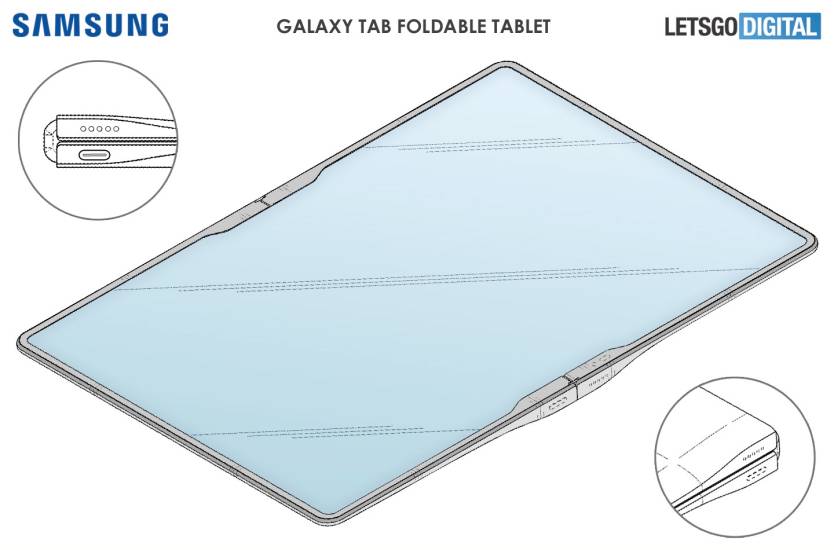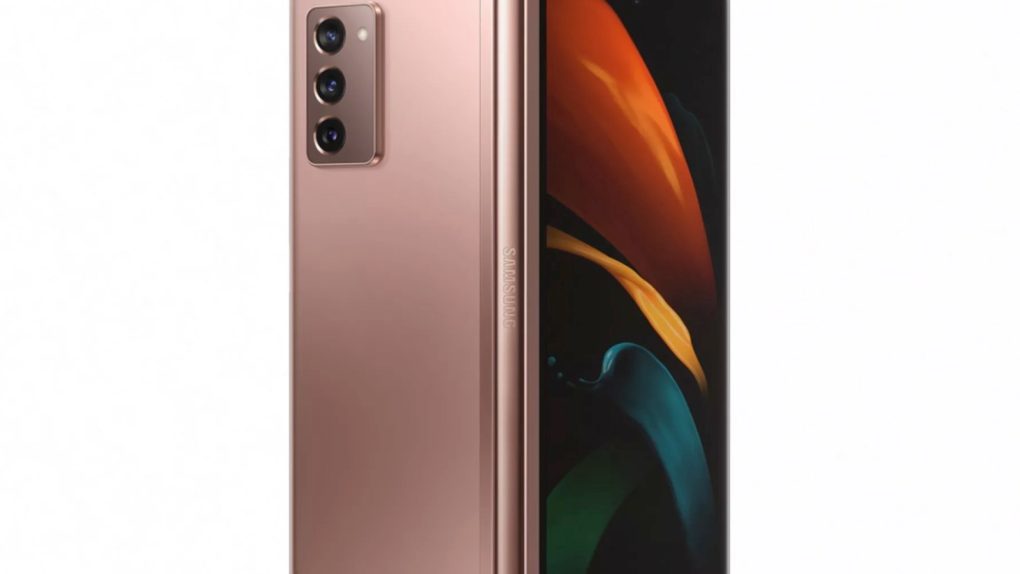Unfold the Galaxy Fold or Z Fold 2, and you end up with a device that looks a lot like a tablet, albeit a small one. The screen comes in at 7.6 inches, which means the Galaxy Fold devices are about as big as the 7.9-inch iPad mini when open. But Samsung is also exploring foldable devices that would feature even larger displays.
The same technology used to make foldable smartphones can be employed in bigger devices featuring foldable screens. Lenovo already launched a foldable laptop that proves the tech works, although the device isn’t as slick as a foldable smartphone. The laptop is relatively thick and features larger bezels.
Samsung’s foldable tablet will have a thinner profile, according to illustrations from a newly discovered patent. Dutch blog LetsGoDigital found the images in a design patent for a Display device the USPTO awarded to Samsung in mid-February.

Unlike the Galaxy Fold, the device in these illustrations does not feature an external display. Samsung apparently doesn’t think this foldable Galaxy Tab version should be used when folded, so the only reason for the tablet to feature a foldable screen is to reduce its overall footprint. This could allow Samsung to offer buyers an even bigger device than the 11-inch and 12.4-inch high-end tablets it’s currently selling. The patent doesn’t reveal, however, how large such a foldable tablet would be.
While there’s no telling when Samsung will release a foldable tablet and whether the designs in this patent will ever be used, the illustrations do highlight some of the ideas Samsung is toying with.
The foldable tablet would be thicker at the hinge area, but the tablet will fold seamlessly, just like a book, without leaving any space between the two sides, as it happens with the Galaxy Fold models.
The hinge would also create two notches that could house the cameras. Interestingly enough, this device has no external cameras.
The hinge is also where Samsung would place several key features of a mobile device. On one side, we’d have the USB-C port and a speaker. The other speaker would sit on the opposite side, next to a power button.

The two sides of the display seem to be thinner than the hinge area, despite having to house battery cells and provide support to the large folding screen. Durability remains the primary concern about foldable devices. The bigger the screen, the bigger the worries. The patent shows two halves aren’t symmetrical, with one of them being slightly thicker than the other.
It’s unclear whether the foldable tablet would only work in tablet mode or whether Samsung could turn it into a laptop, where half of the screen would serve as a keyboard — that’s one of the use cases for Lenovo’s ThinkPad X1 Fold.
Samsung did make plenty of headway when it comes to building foldable devices. The 2020 models feature screens made of glass that are much sturdier than the Galaxy Fold’s plastic screen. Samsung also fixed the hinge design issues that allowed debris to get into the first-gen foldable. Foldable glass and hinge technologies will mature further, and future foldable devices should be even more durable than the first models.
That said, it’s unclear when the first “Galaxy Tab Fold” might arrive.








